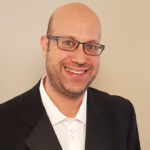
Sol Rosenbaum, Director
Green & Energy Services
(443) 320-0429
[email protected]
I had a fantastic time at the Association of Energy Engineer’s annual West Coast Energy Management Congress conference last week in Seattle. Lots of great learning sessions, networking opportunities, and some new technologies to consider.
I just wanted to share 5 take-aways from the conference that either taught me something completely new or that gave me a different perspective on an issue with which I was familiar:
- In the opening session, Maria T. Vargas, Director of the Better Buildings Challenge, US Department of Energy was asked about the effect on her department with changing political tides. She answered that energy efficiency is an issue that has bipartisan support from both major parties. This is something I have preached for a while. We should not make energy efficiency & reduction a red/blue issue. I particularly liked her analogy to an old-school radio with lots of adjustment dials. Some people may respond to efficiency based on the money dial, some to the save the environment dial, some to the pollution dial etc. However, in the end, they are all adjusting the dial towards energy efficiency and that is what really matters.
- When it comes to measurement & verification (M&V) of an energy project everyone focuses on the details of how we are going to quantify the savings. They think about the variables to be measured and the frequency at which they will be measured. However, all of this can be worthless if you don’t take those same measurements in the baseline, pre-installation condition. Yes, this seems obvious to me now, but as a non-M&V guy, my understanding of M&V had always been in the post-install realm. Thanks, Eva Urbatsch for sharing this insight in your presentation.
- Utility usage analysis should always be graphed against the weather to gain further insights. You can generally see baseline usage and peaks for seasonal cooling/heating loads. However, when graphed against average daily weather, you can also see when baseload reduction projects were implemented (change in y-intercept of best fit line), when a seasonal adjustment like HVAC improvements are made (change in slope of best fit line) or just when something weird happened (an outlying point on the graph) that needs to be investigated further. Thanks, John Avina for sharing this insight in your presentation.
- When I think about analytics in the energy efficiency world, I think about using all those data points to pinpoint areas to reduce energy usage. While this is often a big reason for analytics, this misses some other great reasons to undergo this process. Other benefits of analytics are improved comfort, reduced maintenance, and increased uptime. Also, analytics must be seen as an iterative process; once you solve one mystery, keep digging through the data to see what other aberrations pop out at you and investigate the cause. Thanks, Chris Olmsted for sharing this insight.
- There are some great efficiency improvements that can be made to rooftop packages units (RTUs). My feelings regarding RTUs was that they are pretty much fixed entities and are either efficient or not efficient when they are delivered and there is not much you can do beyond that point. However, this is not the case and you can upgrade the controls of these units to add in fan speed control, setpoint optimization, and economizer operation settings. For example, most units are set to enter economizer mode when the outside air (OA) is below 60 or 65 °F. However, economizer can really be used efficiently whenever the temperature/dew point is lower than the return air (RA) temperature/dewpoint; that is, consider the relative conditions of the OA air versus the RA and not just the absolute conditions of the OA. Thanks, Len Beyea for sharing this insight.
All in all, the AEE team put on a great conference with lots of panels & sessions to meet the needs of the diverse interest groups that attended. I look forward to the next AEE conference in October in Charlotte to see what great tidbits of knowledge I can pick up there. Also, a slightly shameless plug, if you attend that conference you can hear me speak on Day Two.
About the Author: Solomon Rosenbaum, PE, CEM, CPMP has a background in mechanical/energy engineer and presently works for GRS Group as Director, Green & Energy Projects. GRS Group provides transactional due diligence services to commercial real estate clients throughout the US. Mr. Rosenbaum focuses primarily on assisting clients achieve energy and water savings through the Fannie/Freddie green financing programs. He also has an interest in mentoring young engineers in the peripheral skills that have helped him in his career.
About GRS Group: GRS Group is a leading provider of commercial real estate (“CRE”) services worldwide. With offices across the United States, Europe, and affiliates around the globe, GRS Group provides local market knowledge with a global perspective for institutional real estate investors, occupiers and lenders worldwide. The GRS Group team has evaluated and advised on over $1 trillion in CRE transactions.

